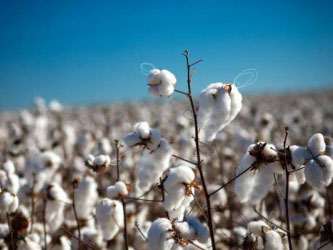中国学者:转基因与传统农业可以共存

吴益东教授课题组在棉铃虫对Bt棉花抗性研究方面取得重要进展
近日,南京农业大学植物保护学院吴益东教授课题组在棉铃虫对Bt棉花抗性研究方面取得重要进展。12月15日,国际权威刊物《自然生物技术》(Nature Biotechnology,IF=39.1)在线发表了题为《自然庇护所延缓昆虫对转基因Bt作物抗性的大规模数据检测》(Large-scale test of the natural refuge strategy
for delaying insect resistance to transgenic Bt crops)的相关研究成果,这是该课题组继2012年揭示棉铃虫田间种群Bt抗性遗传多样性之后的又一重要进展。博生研究生金琳为该论文第一作者,吴益东教授为通讯作者。
为了延缓害虫对转基因Bt抗虫作物抗性的产生,美国、澳大利亚等发达国家通常采用庇护所策略(Refuge),即在Bt作物附近种植20%的非Bt作物作为害虫的庇护所,以提供足够敏感性害虫对抗性基因进行有效稀释,从而延缓抗性产生和发展。我国自1997年开始种植Bt抗虫棉,我国特有的小规模、多样化种植结构使与棉花同时期种植的玉米、大豆、花生、芝麻等其他寄主作物为棉铃虫提供了天然庇护所(Natural refuge)。基于棉花生产的实际情况,我国没有要求农民种植20%的常规棉花作为靶标害虫——棉铃虫的庇护所。但是,天然庇护所是否能延缓Bt抗性一直缺乏评价方法和直接证据。
通过6省17县连续4年大规模Bt抗性监测和抗性基因型鉴定,发现我国华北棉区棉铃虫Bt抗性个体频率由2010年0.93%上升到2013年5.5%。根据模型模拟的结果进行预测,如果没有天然庇护所,抗性个体频率在2013年将达到98%;如果有56%的有效庇护所,抗性个体频率在2013年预测为4.9%,与实测值5.5%相符。田间笼罩试验及模型模拟的结果还表明,天然庇护所延缓抗性的效率为种植常规棉花人工庇护所的15%。该研究在国际上首次证实天然庇护所能够有效延缓靶标害虫对Bt作物抗性的发展,同时也直接证明了在棉铃虫Bt抗性遗传方式多样化的背景下显性抗性发展速度显著快于隐性抗性。
上述研究成果由吴益东教授课题组、中国农科院植保所吴孔明院士课题组及美国亚利桑那(Arizona)大学昆虫系Tabashnik教授合作完成,将为合理使用天然庇护所策略及定量评价其延缓抗性效率提供重要科学依据,丰富和完善了庇护所抗性治理策略的理论,对我国Bt抗虫棉科学使用及棉铃虫抗药性治理具有指导意义。
原文链接: Large-scale test of the natural refuge strategy for delaying insect resistance to transgenic Bt crops.
Lin Jin, Haonan Zhang, Yanhui Lu, Yihua Yang, Kongming Wu, Bruce E Tabashnik&Yidong Wu. Nature Biotechnology, 15 December 2014; doi:10.1038/nbt.3100
原文摘要:The ‘natural refuge strategy” for delaying insect resistance to transgenic cotton that produces insecticidal proteins from Bacillus thuringiensis (Bt) relies on refuges of host plants other than cotton that do not make Bt toxins. We tested this widely adopted strategy by comparing predictions from modeling with data from a four-year field study of cotton bollworm (Helicoverpa armigera) resistance to transgenic cotton producing Bt toxin Cry1Ac in six provinces of northern China. Bioassay data revealed that the percentage of resistant insects increased from 0.93% in 2010 to 5.5% in 2013. Modeling predicted that the percentage of resistant insects would exceed 98% in 2013 without natural refuges, but would increase to only 1.1% if natural refuges were as effective as non-Bt cotton refuges. Therefore, the results imply that natural refuges delayed resistance, but were not as effective as an equivalent area of non-Bt cotton refuges. The percentage of resistant insects with nonrecessive inheritance of resistance increased from 37% in 2010 to 84% in 2013. Switching to Bt cotton producing two or more toxins and integrating other control tactics could slow further increases in resistance.
作者:网络

